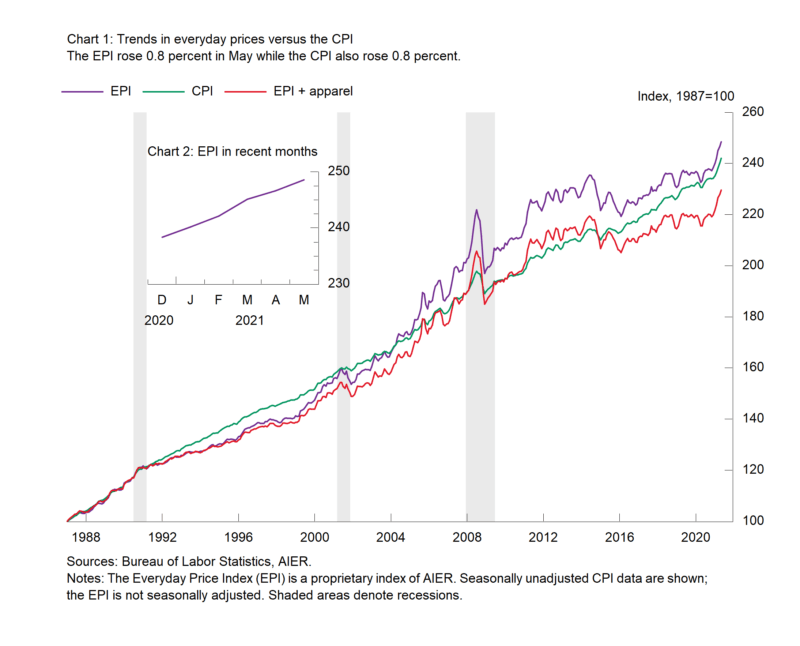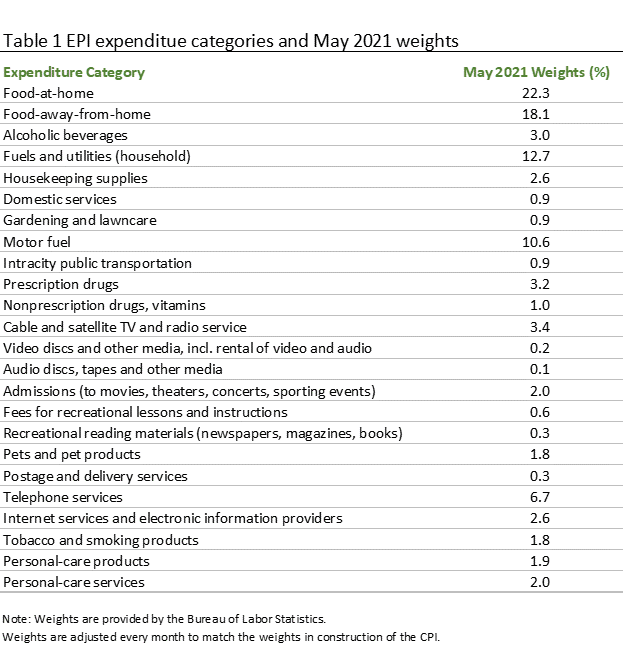Everyday Prices Rise at the Fastest Annual Pace Since 2011
The AIER Everyday Price Index increased by 0.8 percent in May, the sixth consecutive gain following back-to-back decreases in October and November. The most recent rise puts the 12-month gain at 6.5 percent, the fastest pace since September 2011.
The positive contributors to the May rise were led by motor fuels prices, up 4.1 percent and contributing 43 basis points – half of the total gain, followed by household fuels and utilities (up 0.9 percent for the month and contributing 11 basis points), food away from home (up 0.6 percent for the month and contributing 10 basis points), food at home (groceries), up 0.3 percent and adding 7 basis points, and domestic services (up 6.4 percent for the month while contributing 6 basis points).
The Everyday Price Index including apparel, a broader measure that includes clothing and shoes, rose 0.7 percent in May, and also the sixth consecutive increase. Over the past year, the Everyday Price Index including apparel is up 6.5 percent, the fastest since September 2011. Apparel prices rose 0.2 percent on a not-seasonally-adjusted basis in May, the fourth increase in the last five months. From a year ago, apparel prices are up 5.6 percent.
The Consumer Price Index, which includes everyday purchases as well as infrequently purchased, big-ticket items and contractually fixed items, rose 0.8 percent on a not-seasonally-adjusted basis in May. Over the past year, the Consumer Price Index is up 5.0 percent, the fastest pace since August 2008. The Consumer Price Index excluding food and energy rose 0.7 percent for the month (not seasonally adjusted) while the 12-month change came in at 3.8 percent.
After seasonal adjustment, the CPI rose 0.6 percent in May while the core increased 0.7 percent for the month. Within the core, core goods prices were up 1.8 percent in May and are up 6.5 percent from a year ago while core services prices rose 0.4 percent for the month and are up 2.9 percent from a year ago. Among the notable increases in the core CPI were used car and truck prices, up 7.3 percent for the month, accounting for about a third of the seasonally-adjusted increase in the total CPI. Other gainers include food – at home and at restaurants – as well as car and truck rentals, household furnishings and operations, new vehicles, airline fares, and apparel.
Like many measures of activity within the economy, many prices continue to be distorted by lingering effects from government restrictions on consumers and businesses that are causing shortages, logistical and supply chain problems, and labor problems. As activity returns to normal, supply and demand will adapt and likely lead to slower price increases, but it may take some time before the economy completely returns to normal functioning.
Note: The Everyday Price Index for April is based on incomplete data due to restrictions on data collection by Bureau of Labor Statistics personnel because of the Covid-19 pandemic.







